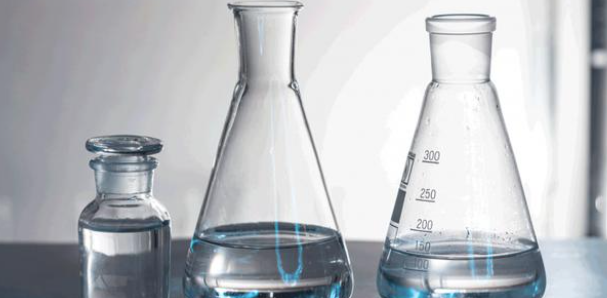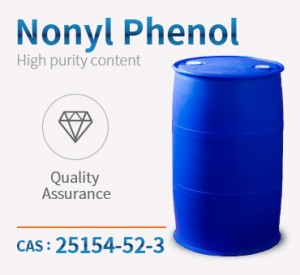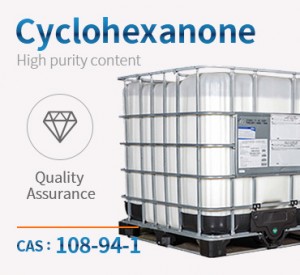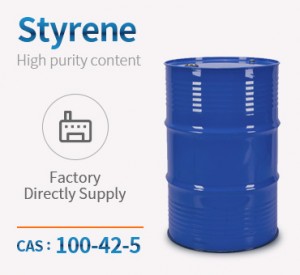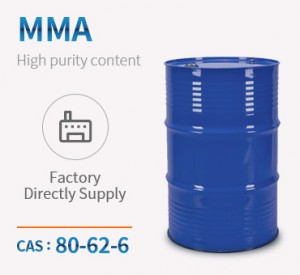Produktuaren izena:azido azetikoa
Formatu molekularra:C2H4O2
CAS zenbakia:64-19-7
Produktuaren egitura molekularra:

Zehaztapena:
| Elementua | Unitatea | Balioa |
| Garbitasuna | % | 99.8minutu |
| Kolorea | APHA | 5max |
| Azido fomikoaren edukia | % | 0,03 gehienez |
| Uraren edukia | % | 0,15 gehienez |
| Itxura | - | Likido gardena |
Ezaugarri kimikoak:
Azido azetikoa, CH3COOH, likido kolorge eta lurrunkorra da giro-tenperaturan. Konposatu puruak, azido azetiko glaziarrak, bere izena 15,6 °C-tan duen itxura kristalino izotzagatik hartzen du. Oro har, azido azetikoa 6 N-ko ur-disoluzio bat da (% 36 inguru) edo 1 N-ko disoluzio bat (% 6 inguru). Diluzio hauek edo beste batzuk erabiltzen dira elikagaiei azido azetiko kantitate egokiak gehitzeko. Azido azetikoa ozpinaren azido bereizgarria da, bere kontzentrazioa % 3,5etik % 5,6ra bitartekoa delarik. Azido azetikoa eta azetatoak landare eta animalia-ehun gehienetan daude kantitate txikietan baina detektagarrietan. Bitartekari metaboliko normalak dira, Acetobacter bezalako bakterio-espezieek sortzen dituzte eta Clostridium thermoaceticum bezalako mikroorganismoek karbono dioxidotik erabat sintetiza ditzakete. Arratoiak azetatoa sortzen du bere gorputz-pisuaren % 1eko abiaduran eguneko.
Ozpin usain sendo, sarkor eta bereizgarria duen likido kolorgegabe gisa, gurin, gazta, mahats eta fruta zaporeetan erabilgarria da. Azido azetiko puru gutxi erabiltzen da elikagaietan, nahiz eta FDAk GRAS material gisa sailkatu duen. Ondorioz, Identitate Definizio eta Arauetan sartzen ez diren produktuetan erabil daiteke. Azido azetikoa ozpinen eta azido pirolignosoaren osagai nagusia da. Ozpin moduan, 11 milioi kilo baino gehiago gehitu zitzaizkien elikagaiei 1986an, gutxi gorabehera kantitate berdinak azidotzaile eta zapore-emaile gisa erabiliz. Izan ere, azido azetikoa (ozpin gisa) zapore-emaile zaharrenetako bat izan zen. Ozpinak asko erabiltzen dira entsalada-saltsa eta maionesa, ozpinetako garratzak eta gozoak eta saltsa eta ketchup ugari prestatzeko. Haragia ontzeko eta barazki batzuk kontserban ontziratzeko ere erabiltzen dira. Maionesa fabrikatzeko, azido azetiko (ozpin) zati bat gatz- edo azukre-gorringoari gehitzeak Salmonellaren bero-erresistentzia murrizten du. Saltxitxen ura lotzen duten konposizioek azido azetikoa edo haren sodio gatza izaten dute askotan, eta kaltzio azetatoa erabiltzen da barazki xerratuen eta kontserben ehundura mantentzeko.
Aplikazioa:
Azido azetikoaren erabilerak industrian
1. Tintak eta tindak sintetizatzeko erabiltzen da.
2. Lurrinen sintesian erabiltzen da.
3. Kautxu eta plastiko industrietan erabiltzen da. Kautxu eta plastiko industrietan polimero garrantzitsu askoren disolbatzaile eta hasierako material gisa erabiltzen da (hala nola PVA, PET, etab.).
4. Pintura eta itsasgarri osagaien hasierako material gisa erabiltzen da
5. Elikagaiak prozesatzeko industrian erabiltzen da gazta eta saltsetan gehigarri gisa eta elikagaiak kontserbatzeko gisa.
Azido azetikoaren erabilerak sintesi kimikoan
1. Zelulosa azetatoaren sintesian erabiltzen da. Zelulosa azetatoa argazki-filmetan eta ehunetan erabiltzen da. Zelulosa azetatozko filma asmatu aurretik, argazki-filma nitratoz egiten zen, eta horrek segurtasun-arazo asko zituen.
2. Azido tereftalikoaren sintesian disolbatzaile gisa erabiltzen da. Paraxilenoa azido tereftaliko bihurtzen da. Azido tereftalikoa PET sintetizatzeko erabiltzen da, eta hori oso erabilia da plastikozko botilak egiteko.
3. Oso erabilia da hainbat alkoholekin erreakzionatzean esterrak sintetizatzeko. Azetato deribatuak oso erabiliak dira elikagai-gehigarri gisa.
4. Binil azetato monomeroaren sintesian erabiltzen da. Monomeroa polimerizatu daiteke poli(binil azetatoa) osatzeko, PVA izenez ere ezaguna. pVAk aplikazio ugari ditu medikuntzatik hasi eta (nanoteknologiarekiko (egonkortzaile gisa) duen biobateragarritasunagatik papergintzaraino).
5. Erreakzio organokatalitiko askotan disolbatzaile gisa erabiltzen da.
Azido azetikoaren erabilerak medikuntzan
1. Azido azetikoa endoskopia pigmentatu izeneko teknikan erabiltzen da, eta hau endoskopia konbentzionalaren alternatiba da.
2. Azido azetikoa umetokiko lepoko minbizia eta lesioak ikuskatzeko erabiltzen da. Umetokiko lepoko minbizia detektatzeko ere erabiltzen da.
3. Azido azetikoa kanpoko otitisa tratatzeko erabiltzen da.
4. Azido azetikoa batzuetan bakterioen eta onddoen infekzioak tratatzeko erabiltzen da.
5. Saguekin egindako laborategiko probetan, azido azetikoak saguen hanturazko erantzuna murrizten duela frogatu da.
Azido azetikoaren etxeko erabilerak
1. Azido azetikoa ozpinaren osagai nagusia da.
2. Ozpina barazkiak ozpinetan jartzeko erabiltzen da
3. Entsalada saltsarentzat erabiltzen da
4. Labeko prozesuan erabiltzen da. Sodio bikarbonatoarekin erreakzionatzen du karbono dioxido gasa askatzeko, janaria leun bihurtzeko.
5. Onddoen aurkako agente gisa erabiltzen da.
Produktuen kategoriak
-

Telefonoa
-

Posta elektronikoa
-

Whatsapp
-

Goia



